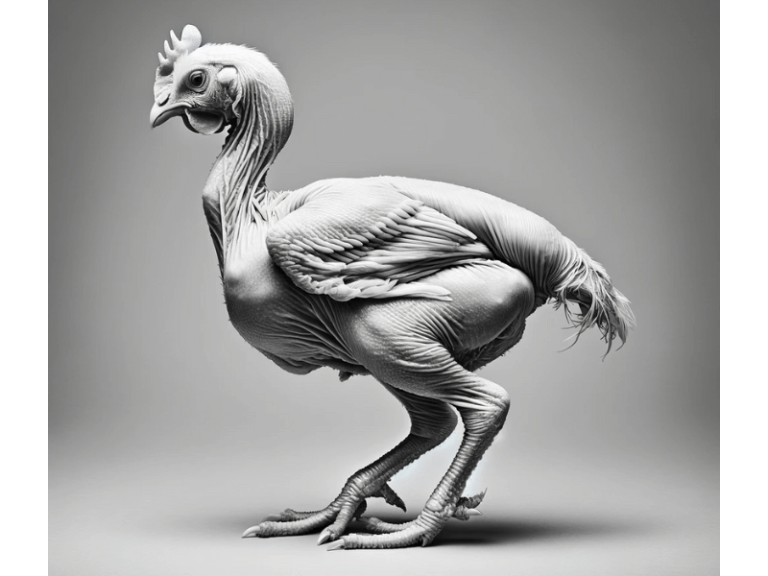Some chickens grow very large but have very few feathers or even none at all, despite various methods or medications being used for treatment, all of which are ineffective. What is the reason for this?
It turns out that chickens with no feathers or few feathers have a genetic connection to their ancestors; it’s a trait passed down from previous generations. Farmers have observed that chickens without feathers are usually more common among roosters and less common among hens. In fact, many featherless chickens die during incubation, with only a few surviving after hatching, so truly featherless chickens are rarely seen.
The featherless chicks we see, or chickens that still have very few feathers by the age of two to three months, are not truly featherless; they simply have slow feather growth.
Scientific experiments have shown that animals that should have fur but don’t, or should have feathers but don’t, are closely related to the lack of thyroid hormone secretion either in the animal itself or in its mother’s body. The thyroid gland is located under the skin outside the trachea, closely attached to the front sides of the thyroid cartilage, and it secretes thyroxine. If a chicken’s thyroid gland is removed, the chicken stops molting, and even after two to three years, it still won’t molt. If a chick’s thyroid gland is deficient, when it grows up, it will be featherless.
Farmers have observed that chicks born from chickens, both male and female, whose feathers grow slowly, sometimes produce “bare-necked chickens”. If one of the male or female chickens has rapidly growing feathers, especially if the male has rapid feather growth, then the offspring’s feathers will also grow quickly, and featherless chickens won’t appear.
Apart from these reasons, some chickens become featherless due to malnutrition or excessive infestation of feather mites.

